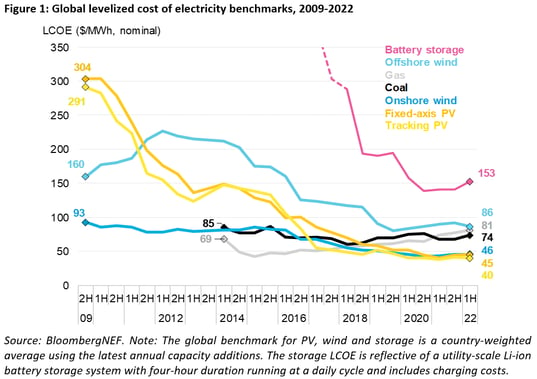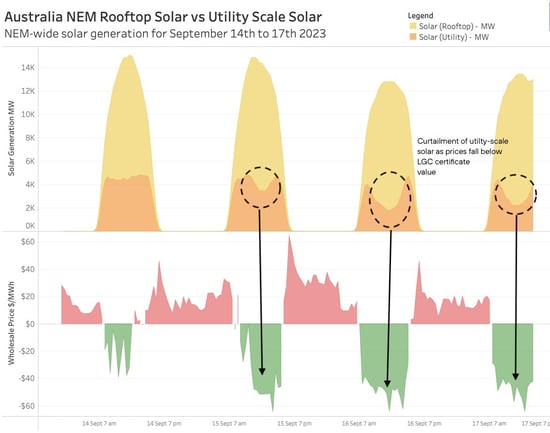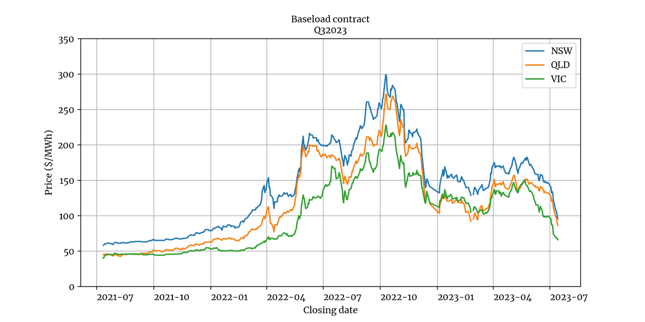Jack Colreavy
- Sep 26, 2023
- 6 min read
ABSI - Rooftop Solar is Killing Coal
Every Tuesday afternoon we publish a collection of topics and give our expert opinion about the Equity Markets.
 Last week world leaders gathered in New York for Climate Week and the UN-hosted Climate Ambition Summit, an event aimed to pressure nations to commit to more rapid emission targets. The event puts Australia in the spotlight as one of the largest exporters of fossil fuels and a grid still heavily reliant on coal. Regardless of emission goals, Australian leaders have a monumental challenge ahead to stabilise a national energy grid undergoing structural change. ABSI this week will analyse the challenges ahead for the Australian energy grid.
Last week world leaders gathered in New York for Climate Week and the UN-hosted Climate Ambition Summit, an event aimed to pressure nations to commit to more rapid emission targets. The event puts Australia in the spotlight as one of the largest exporters of fossil fuels and a grid still heavily reliant on coal. Regardless of emission goals, Australian leaders have a monumental challenge ahead to stabilise a national energy grid undergoing structural change. ABSI this week will analyse the challenges ahead for the Australian energy grid.
It is indisputable that photovoltaic solar panels are the cheapest form of energy generation period. While their capacity factors (effectiveness) varies depending on location, in Australia, a country blessed with a lot of sunshine, the capacity factors are high resulting in low levelised costs of energy (LCOE) and therefore higher uptake. Research by IRENA, found that between 2013 and 2020, installed costs of residential solar systems fell by 67% to US$0.069 kw/h. It's no wonder then that Australia is a global leader in rooftop solar adoption with a recent SunWiz report finding small-scale solar has passed 20,000 MW across 3.4 million rooftops.
Source: Bloomberg NEF
Unfortunately, this isn’t all good news.
Rooftop solar is beyond the control of the Australian Energy Market Operator (AEMO) and is only functional during daylight hours, resulting in periods of extreme volatility with reductions during the day and spikes in the evening periods. This unique situation is the cause of negative power prices during the day and extremely high prices in the evening peak. Baseload coal power generators are feeling the pain as they can’t shut off generation intermittently and so have to pay to put power into the grid on top of the fuel price of coal. Interestingly, large-scale utility solar players are also being hurt as they have to shut off generation during these negative periods or risk going bankrupt.
Contributions to real GNI per person growth (measured in percentage points)
Source: Gridcog
According to Energy.gov, coal accounted for 47% of Australia’s total electricity generation in 2022, down from 51% in 2021 but still by far the biggest contributor. Concerningly, the 2022 AEMO System Security Planning report declared that 40% of coal-fired capacity in the National Energy Market (NEM) would be withdrawn over the next 5 years and 60% by 2030 which will contribute to an electricity supply shortfall from 2025 onwards. This all kicks off with the retirement of Australia’s largest coal-fired power plant, the 2,880 MW Eraring Power Station scheduled for an early retirement in 2025.
This sudden withdrawal of coal capacity is directly attributed to the cannibalisation of daytime power prices from rooftop solar. The economics no longer stack up for coal in Australia, which is good for the environment but bad for our wallets as the reduction in supply will keep power prices elevated for the foreseeable future. For example, ASX-listed electricity futures for NSW show power prices trading at an average of A$155/MW in 2024, A$143 in 2025, and A$150 in 2026. While this is an improvement over the spikes it 2022, it’s still 50-100% higher than prices prior to 2021.
Source: ABC
The solution isn’t simple.
The minimum operational demand during the day in the NEM is falling but there still is an urgent need for power generation in the evenings and during periods of low generation from renewables. There is no silver bullet on this and the solutions will be wide ranging.
Big batteries are a solution available today, and are doing a great job in stabilising the grid, but they’re expensive and resource intensive. Green hydrogen gas peaking plants can help but adequate supply of green hydrogen is a decade away. A solution commonplace globally but unutilised in Australia is bioenergy. According to the IEA, modern bioenergy is the largest source of renewable energy globally and an untapped resource for Australia. Verdant Earth Technologies is trying to change this by converting a decommissioned coal power station to run on biomass. If successful, Verdant will add approximately 1 million MW hours of electricity to a grid in dire need of supply.
Global consensus on the climate change debate will never be reached. We will always have alarmists saying the world will end tomorrow and denyers who think it’s all a conspiracy. What isn’t debatable is equilibrium pricing stemming from the interaction between supply and demand. It is great that PV solar is so cheap and it encourages mass adoption as consumers seek ways to lower their power bills. Unfortunately, there are knock-on effects to this behaviour and Australian leaders need to urgently act to address the challenge.
We offer value-rich content to our BPC community of subscribers. If you're interested in the stock market, you will enjoy our exclusive mailing lists focused on all aspects of the market.
To receive our exclusive E-Newsletter, subscribe to 'As Barclay Sees It' now.
Share Link









